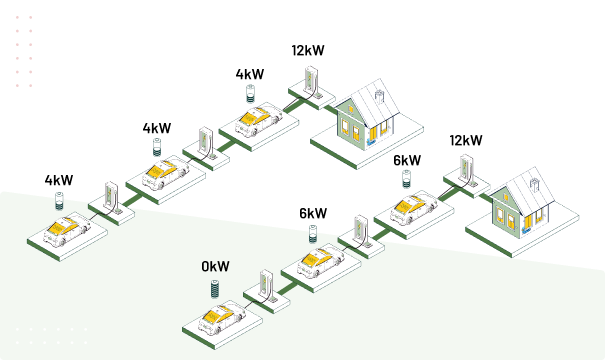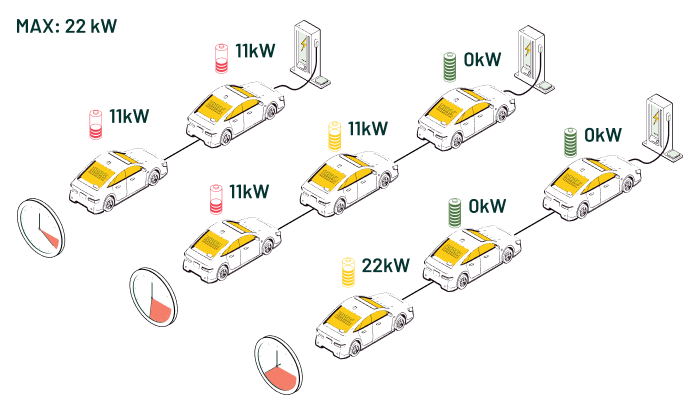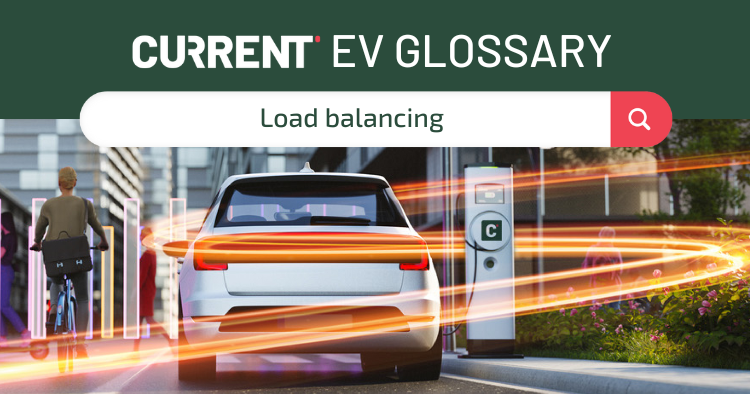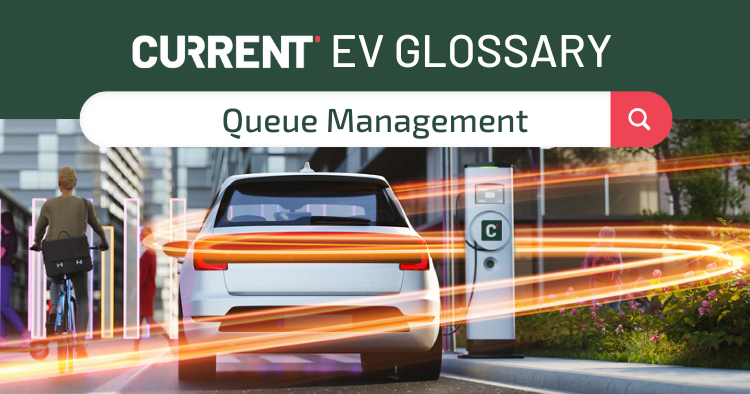Load Balancing
Although electric vehicles (EVs) have revolutionized the transportation sector with their environmentally friendly nature and lower operating costs, they have also created new challenges for the power grids and energy suppliers. One of the most critical challenges is the need for efficient load balancing, especially in the EV charging industry. In this article, we will explore what load balancing is, why it is important for EV charging, and what types of load balancing exist.
WHAT IS LOAD BALANCING?
Load balancing, also known as demand response, refers to the practice of adjusting electricity consumption in relation to the available electrical capacity in the grid. The aim is to avoid overloading the grid during periods of high demand and prevent power outages. This is particularly relevant in EV charging, as multiple EVs charging at the same time can create significant load challenges for local power grids and distribution systems.
WHY IS LOAD BALANCING IMPORTANT FOR EV CHARGING?
Load balancing is essential to maintain the stability and reliability of power grids as EV usage continues to grow. Here are some reasons why it's important in EV charging:
-
Avoid overloading: When multiple EVs are connected to charging stations at the same time, the power grid can become overloaded, leading to power outages and damage to the infrastructure. Load balancing helps to distribute power consumption evenly over time, avoiding overloading.
-
Optimal use of capacity: Power grids have limited capacity available at any given time. By balancing the load, you can utilize this capacity in the most efficient way possible and avoid unnecessary infrastructure upgrades.
-
Reduced energy costs: By charging EVs during periods of low demand, such as at night, electricity costs can be lower. This results in cost savings for EV owners and charging operators.
TYPES OF LOAD BALANCING
There are two main types of load balancing:
Static load balancing
Static load balancing systems operate with predefined settings and fixed times for power consumption control. This means that they do not take into account instantaneous demand or real-time changes in the electricity grid. Static systems work well for predictable loads where a fixed pattern of power consumption is known in advance. They are easy to implement and can be cost-effective for situations with stable demand. However, they are less flexible when it comes to dealing with unforeseen changes in demand or grid capacity.

Dynamic load balancing
Dynamic load balancing involves real-time adjustments to electricity consumption to adapt to changes in the grid. This can include temporarily reducing charging speed or delaying charging when there is high demand or low available grid capacity. Dynamic systems are highly effective in situations where the grid load can vary unpredictably. They provide increased flexibility and responsiveness, and can adapt to changes in real time. However, implementing dynamic load balancing can be more complex and require advanced infrastructure, including smart charging stations and communication with grid operators.

Both approaches play an important role in addressing the challenges of high demand and limited grid capacity. By implementing the right load balancing technology, we can ensure that EV usage continues to grow without jeopardizing power grids. At the same time, it provides economic benefits to EV drivers and helps reduce energy costs.
See our glossary or contact us to read more about load balancing and EV charging.


